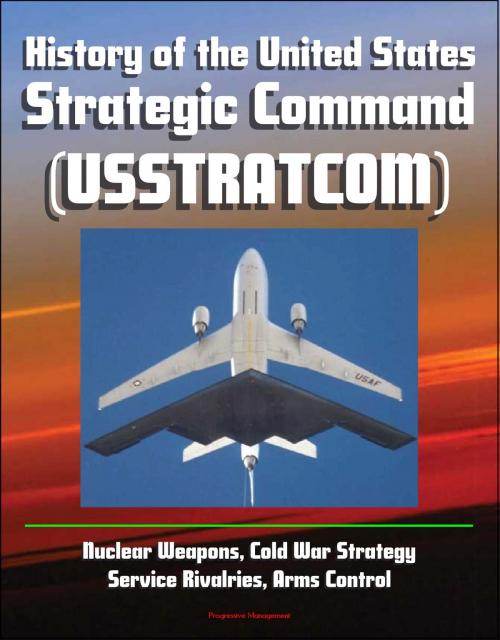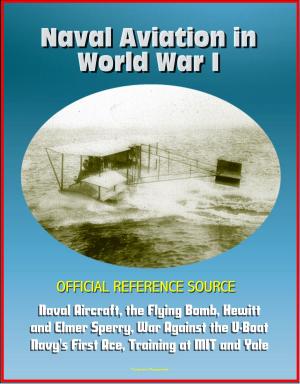History of the United States Strategic Command (USSTRATCOM) - Nuclear Weapons, Cold War Strategy, Service Rivalries, Arms Control
Nonfiction, History, Military, Nuclear Warfare, United States| Author: | Progressive Management | ISBN: | 9781301010837 |
| Publisher: | Progressive Management | Publication: | August 15, 2013 |
| Imprint: | Smashwords Edition | Language: | English |
| Author: | Progressive Management |
| ISBN: | 9781301010837 |
| Publisher: | Progressive Management |
| Publication: | August 15, 2013 |
| Imprint: | Smashwords Edition |
| Language: | English |
This history began as a project to commemorate the tenth anniversary of the US Strategic Command. As June 2002 approached, it became apparent that the command would be altered fundamentally by proposed modifications to the Unified Command Plan. We learned that a new command would be established that combined the missions of the United States Strategic Command and the United States Space Command. Names were proposed for the new command, but none of them seemed to fit. Then on July 11, 2002, Secretary of Defense Donald Rumsfeld gave the new command the same name as its predecessor. This unclassified history is of the US Strategic Command that was established on June 1, 1992, and disestablished on October 1, 2002.
The original United States Strategic Command was established on the first of June 1992. It owed its existence to the end of the Cold War and a new view of the place of nuclear warfare in overall US defense policy. While the circumstances were changed, the idea of a unified command with responsibility for the employment of nuclear weapons was not new.
When General George L. Butler was establishing US Strategic Command, he found it useful for cultural reasons to anchor the need for a STRATCOM in the past, and particularly to identify it with General Curtis E. LeMay, the widely acknowledged founding father of the Strategic Air Command.
LeMay was an unapologetic advocate of a national defense strong enough to overwhelm any potential enemy, especially the Soviet Union, which he deeply distrusted. He was committed to a belief in air power's exclusive preeminence in achieving victory and, as a subtext to that, the possession of significant numbers of nuclear weapons and the airframes capable of delivering them to their intended targets.
LeMay, who was not alone in this opinion, was successful in his argument and the emphasis in the post-Korean Conflict military build-up was in the production of nuclear weapons, the bombers to carry those weapons, and support structure for both.
Another significant thread in the development of the early idea of a strategic command to control nuclear forces and targeting was interservice rivalry, particularly between the Air Force and the Navy. Until 1947, there were two services, the Army and the Navy. Air forces were part of the Army, and the US Marine Corps was under the Secretary of the Navy. The Secretary of War and the Secretary of the Navy were cabinet positions that had direct access to the President. Serious rivalries had existed between the two services as they competed for resources and during World War II friction had developed between the Army and Navy over coordination.
Following the Second World War, the President and Congress sought to mitigate this rivalry through passage of the National Security Act of 1947. That act established the Joint Chiefs of Staff, the Chairman of the Joint Chiefs of Staff, the Secretary of Defense, and the independent Air Force with its own Chief of Staff. The rivalry between the newly separate Air Force and the Navy was even more intense than that between the Army and the Navy.
This history began as a project to commemorate the tenth anniversary of the US Strategic Command. As June 2002 approached, it became apparent that the command would be altered fundamentally by proposed modifications to the Unified Command Plan. We learned that a new command would be established that combined the missions of the United States Strategic Command and the United States Space Command. Names were proposed for the new command, but none of them seemed to fit. Then on July 11, 2002, Secretary of Defense Donald Rumsfeld gave the new command the same name as its predecessor. This unclassified history is of the US Strategic Command that was established on June 1, 1992, and disestablished on October 1, 2002.
The original United States Strategic Command was established on the first of June 1992. It owed its existence to the end of the Cold War and a new view of the place of nuclear warfare in overall US defense policy. While the circumstances were changed, the idea of a unified command with responsibility for the employment of nuclear weapons was not new.
When General George L. Butler was establishing US Strategic Command, he found it useful for cultural reasons to anchor the need for a STRATCOM in the past, and particularly to identify it with General Curtis E. LeMay, the widely acknowledged founding father of the Strategic Air Command.
LeMay was an unapologetic advocate of a national defense strong enough to overwhelm any potential enemy, especially the Soviet Union, which he deeply distrusted. He was committed to a belief in air power's exclusive preeminence in achieving victory and, as a subtext to that, the possession of significant numbers of nuclear weapons and the airframes capable of delivering them to their intended targets.
LeMay, who was not alone in this opinion, was successful in his argument and the emphasis in the post-Korean Conflict military build-up was in the production of nuclear weapons, the bombers to carry those weapons, and support structure for both.
Another significant thread in the development of the early idea of a strategic command to control nuclear forces and targeting was interservice rivalry, particularly between the Air Force and the Navy. Until 1947, there were two services, the Army and the Navy. Air forces were part of the Army, and the US Marine Corps was under the Secretary of the Navy. The Secretary of War and the Secretary of the Navy were cabinet positions that had direct access to the President. Serious rivalries had existed between the two services as they competed for resources and during World War II friction had developed between the Army and Navy over coordination.
Following the Second World War, the President and Congress sought to mitigate this rivalry through passage of the National Security Act of 1947. That act established the Joint Chiefs of Staff, the Chairman of the Joint Chiefs of Staff, the Secretary of Defense, and the independent Air Force with its own Chief of Staff. The rivalry between the newly separate Air Force and the Navy was even more intense than that between the Army and the Navy.















